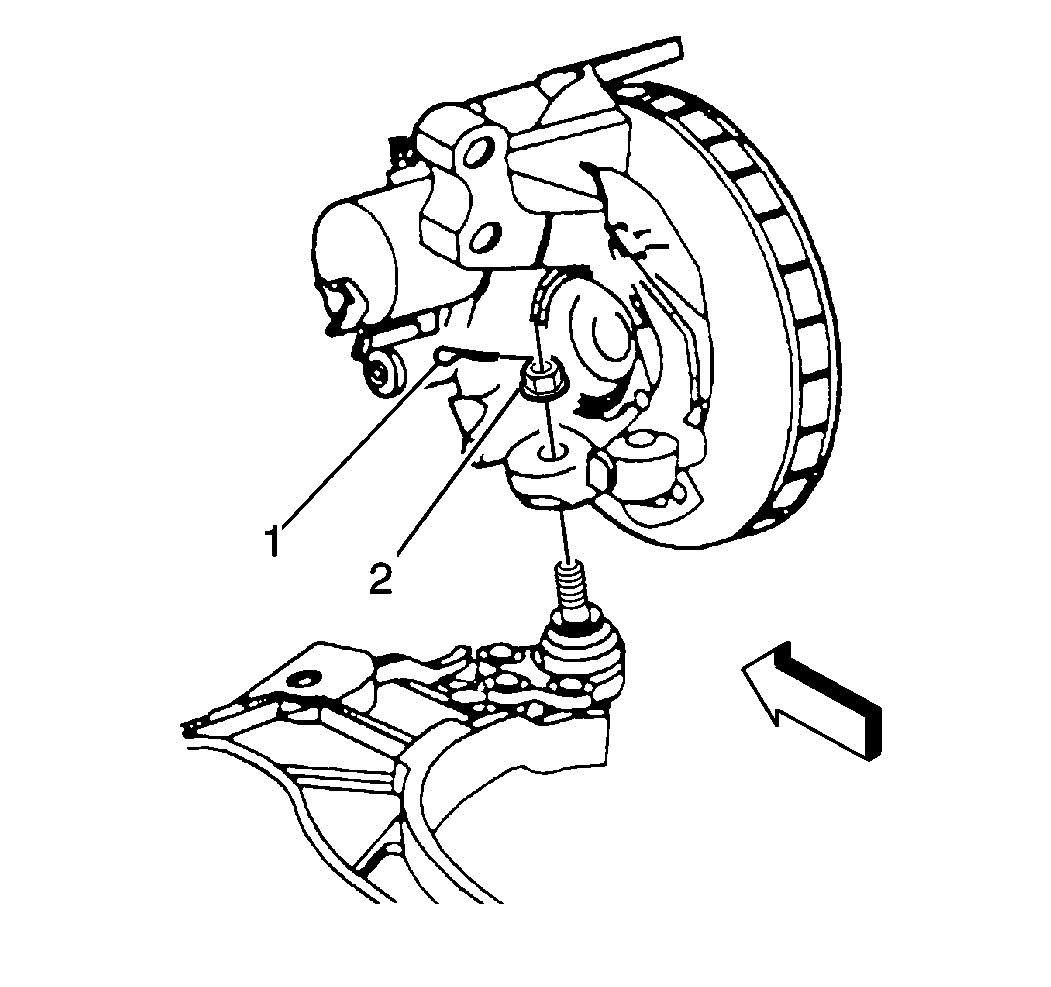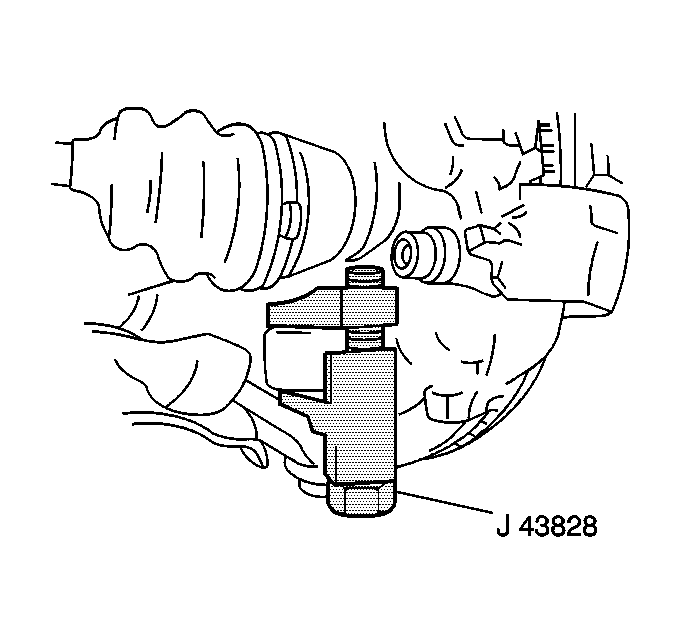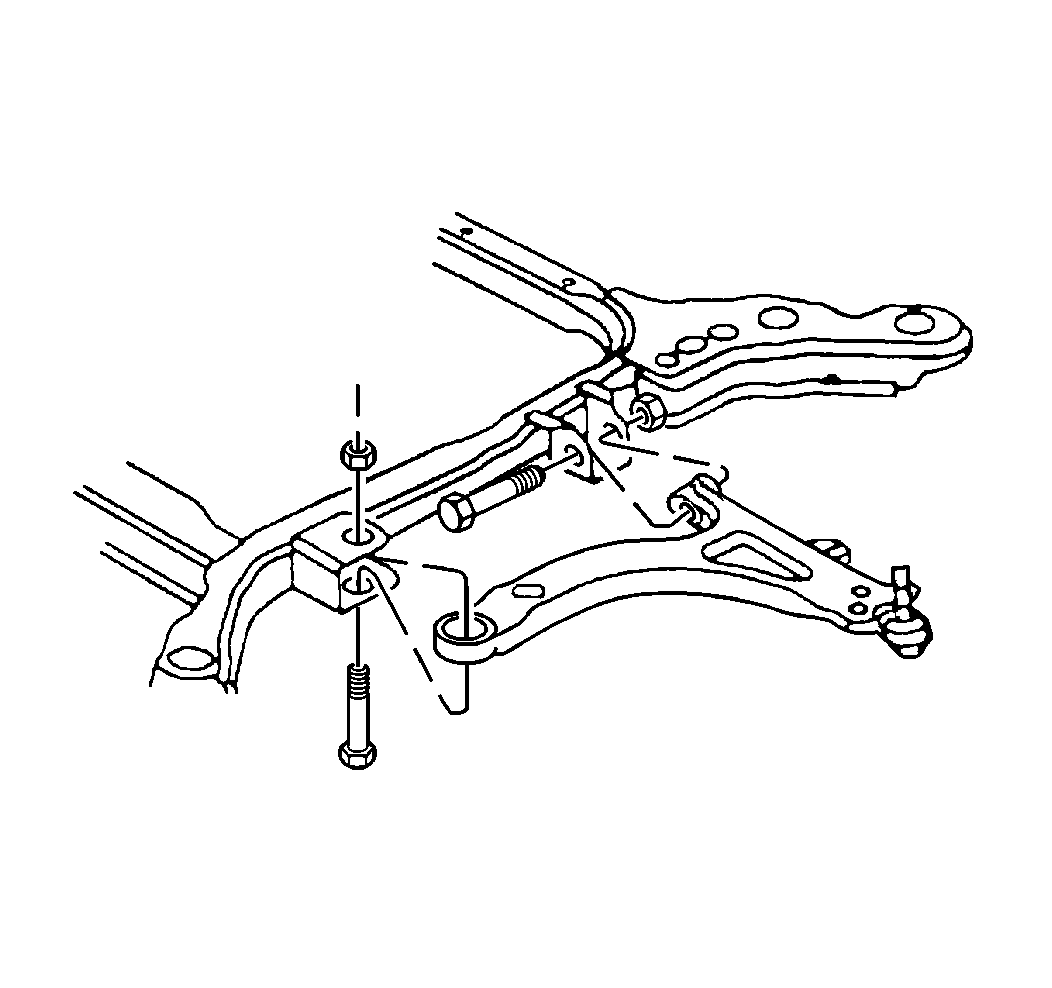Removal Procedure
Tools Required
J 43828 Ball Joint Separator
- Raise the vehicle. Support the vehicle by the frame. Allow the control arms to hang free. Refer to Lifting and Jacking the Vehicle in General Information.
- Remove the wheel and the tire. Refer to Tire and Wheel Removal and Installation in Tires and Wheels.
- Disconnect the stabilizer link to control arm bolt.
- Remove the cotter pin (1). Loosen the nut (2) from the ball stud.
- Use the J 43828 in order to remove the ball joint from the steering knuckle.
- Remove the control arm mounting bolts.
- Remove the control arm from the frame.
Notice: Use only the recommended tools for separating the ball joint from the knuckle. Failure to use the recommended tools may cause damage to the ball joint and seal.



Notice: Care must be exercised to prevent Tri-Pot joints from being over-extended. When either end of the shaft is disconnected, over-extension of the joint could result in separation of internal components and possible joint failure. Drive axle joint seal protectors should be used any time service is performed on or near the drive axles. Failure to observe this can result in interior joint or seal damage and possible joint failures.

Installation Procedure
- Install the control arm to the frame.
- Install the bolts, washers and nuts.
- Connect the stabilizer link to the control arm.
- Connect the ball joint to the knuckle.
- Install the cotter pin.
- Lower the vehicle and support the lower control arm with a jackstand to set the control arm bushings into the normal position.
- Tighten the control arm bolts in the following sequence:
- Tighten the rear mounting bolt to 158 N·m (117 lb ft).
- Tighten the front mounting nut to 158 N·m (117 lb ft).
- Install the wheel and tire. Refer to Tire and Wheel Removal and Installation in Tires and Wheels.
- Lower the vehicle.
- Inspect the trim height. Refer to Trim Height in Suspension General Diagnosis.
- Check suspenson alignment.

Important: Do not tighten the control arm nuts at this time. Before tightening the control arm mounting nuts, support the weight of the vehicle by the control arms in order to obtain the vehicle design trim heights.
Notice: Use the correct fastener in the correct location. Replacement fasteners must be the correct part number for that application. Fasteners requiring replacement or fasteners requiring the use of thread locking compound or sealant are identified in the service procedure. Do not use paints, lubricants, or corrosion inhibitors on fasteners or fastener joint surfaces unless specified. These coatings affect fastener torque and joint clamping force and may damage the fastener. Use the correct tightening sequence and specifications when installing fasteners in order to avoid damage to parts and systems.
Tighten
| • | Tighten the stabilizer shaft link assembly nut to 17 N·m (13 lb ft). |
| • | Tighten the ball joint nut to 10 N·m (88 lb in). Then, tighten the two flats to a minimum of 55 N·m (41 lb ft) in order to align the cotter pin slot. |
Tighten
